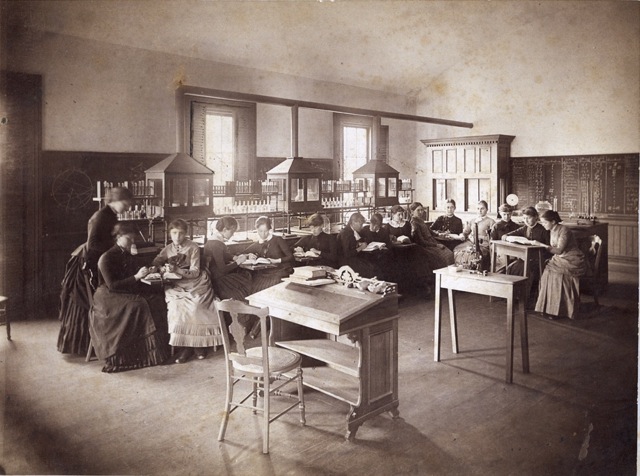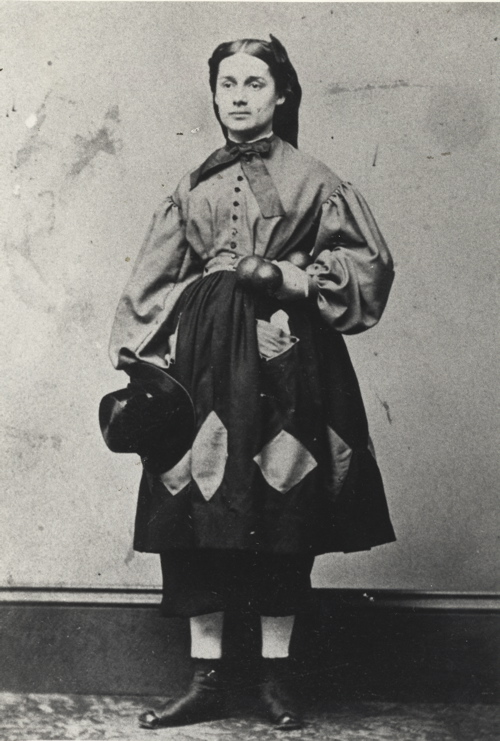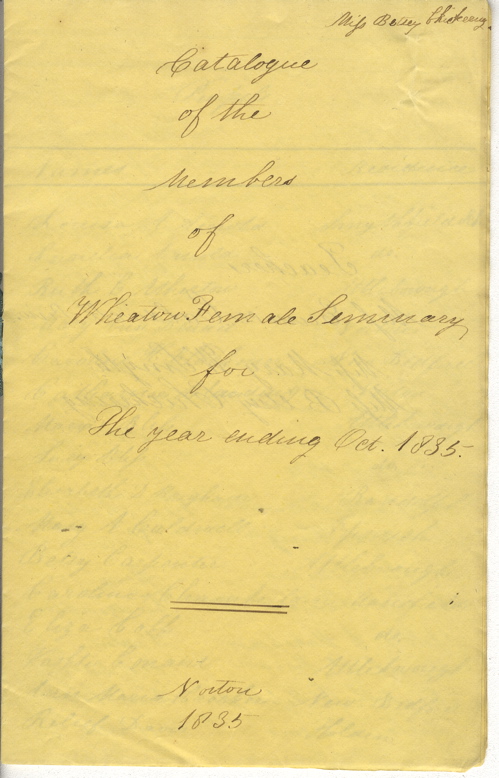Primarily crafted by Mary Lyon, the first curriculum was tremendously influenced by the one used at Ipswich Female Seminary. That seminary was modeled after Joseph Emerson’s seminary; this was to be expected, given Emerson’s influence on Mary Lyon’s teaching career.
All of the individuals who provided ideas about the curriculum at Wheaton Female Seminary aimed to present an academic program that was comparable to those found in colleges for men. The philosophy of the time drew heavily on the “English branches.” This program excluded what might now be termed Humanities: Classics, modern languages, literature, history, visual art, and music. Mathematics and science disciplines dominated the curriculum. Typical subjects studied included algebra, plane geometry, geology, chemistry, astronomy, and natural history. Other subjects studied outside mathematics ands science were natural philosophy, moral philosophy, English grammar, rhetoric, and Evidences of Christianity.
Wheaton Female Seminary’s curriculum was divided into five main areas. The first addressed writing and public speaking. English grammar and rhetoric were at the core of this area. The second section was science and mathematics. Science subjects included botany, physiology, chemistry, astronomy, physics, and geology. Wheaton students began their math studies with algebra, and moved on to geometry and trigonometry.

Wheaton Female Seminary was never associated with a specific religious denomination, but at the schools inception, Judge Wheaton expressed his desire that the Christian character of Wheaton’s students was of the utmost importance. As a result, spiritual education was the third area of study. While a majority of this was addressed through daily morning and evening prayers, as well as weekly church attendance and observance of the Sabbath, the Seminary also required a course which studied Butler’s Analogy of Religion, Natural and Revealed, to the Constitution and Course of Nature.
The fourth section of the curriculum emphasized physical well-being. Both Mary Lyon and Mrs. Wheaton rejected the perception that women were weaker and more delicate than men. They believed that women should develop strong and healthy physiques, preparing them for active lives. Wheaton Female Seminary continually broke boundaries in its pursuit of women’s physical education. This is discussed further in Legacy: Women’s education.

A fifth area of study was primarily fee-based. This included courses that were not accepted as part of the English branches, and which for many years did not count toward graduation. Latin, Greek, modern languages (French, German, Italian), music, and studio art were available to students throughout the first fifty years. It was not until the 1880s that some of these were adopted as part of the regular curriculum and no longer required payment of a separate fee.

